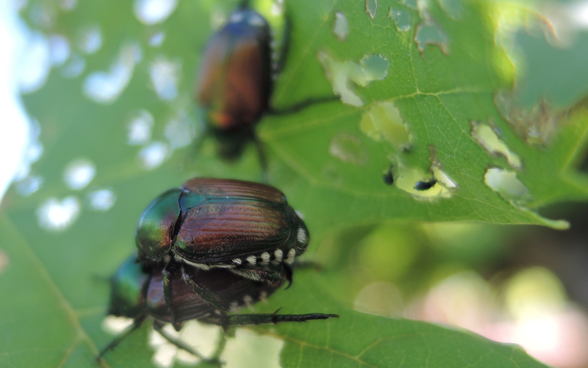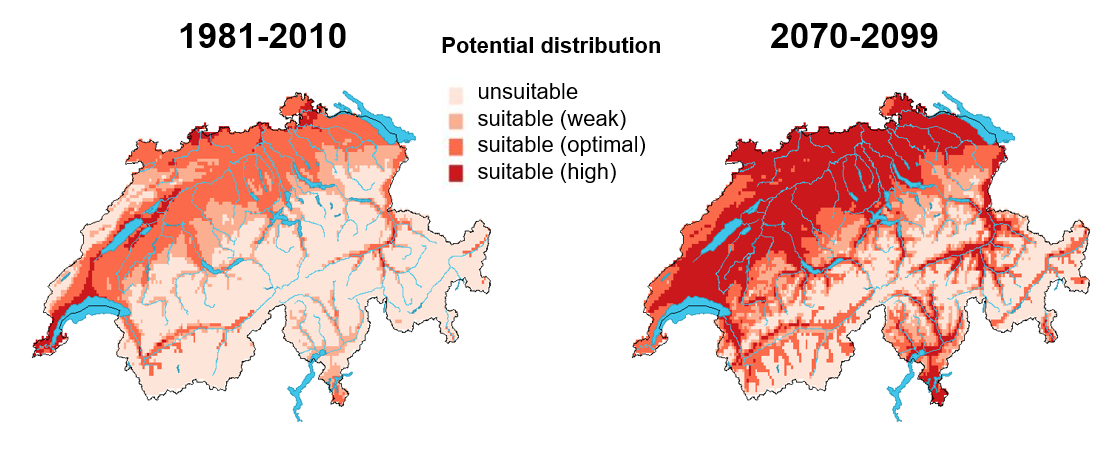Allsopp PG (1996) Japanese beetle, Popillia japonica Newman (Coleoptera: Scarabaeidae): Rate of movement and potential distribution of an immigrant species. Coleopt Bull 50 (1):81-95
Bragard C, Dehnen-Schmut K, Di Serio F, Gonthier P, Jacques MA, Miret JAJ, Justesen AF, Magnusson CS, Milonas P, Navas-Cortes JA, Parnell S, Potting R, Reignault PL, Thulke HH, van der Werf W, Civera AV, Yuen J, Zappala L, Czwienczek E, MacLeod A, PLH EPPH (2018) Pest categorisation of Popillia japonica. Efsa Journal 16 (11). doi:10.2903/j.efsa.2018.5438
EPPO (2016) Popillia japonica: procedures for official control. European and Mediterranean Plant Protection Organization Bulletin 46:543-555
EPPO (2017) First report of Popillia japonica in Switzerland. European and Mediterranean Plant Protection Organization (EPPO) Reporting Service No. 09-2017:2017/2160
Fleming WE (1972) Biology of the Japanese beetle. USDA Tech Bull 1449:1-129
Kistner-Thomas EJ (2019) The potential global distribution and voltinism of the Japanese beetle (Coleoptera: Scarabaeidae) under current and future climates. Journal of Insect Science 19 (2). doi:10.1093/jisesa/iez023
Kriticos DJ, Maywald GF, Yonow T, Zurcher EJ, Hermann NI, Sutherst RW (2015) CLIMEX Version 4: Exploring the effects of climate on plants, animals and diseaes. CSIRO, Canberra
Pavesi M (2014) Popillia japonica specie aliena invasive segnalata in Lombardia. L'Informatore Agrario 32:53-55
Potter DA, Held DW (2002) Biology and management of the Japanese beetle. Annu Rev Entomol 47:175-205. doi:10.1146/annurev.ento.47.091201.145153
Shanovich HN, Dean AN, Koch RL, Hodgson EW (2019) Biology and management of Japanese beetle (Coleoptera: Scarabaeidae) in corn and soybean. Journal of Integrated Pest Management 10 (1). doi:10.1093/jipm/pmz009
Zhang QF, Xu Y, Huang XK, Han XM, Xu RM (2002) Prediction of suitable areas for the Japanese beetle in China. Plant Quarterly 16:73-77
Zhu GP, Li HQ, Zhao L (2017) Incorporating anthropogenic variables into ecological niche modeling to predict areas of invasion of Popillia japonica. J Pest Sci 90 (1):151-160. doi:10.1007/s10340-016-0780-5








